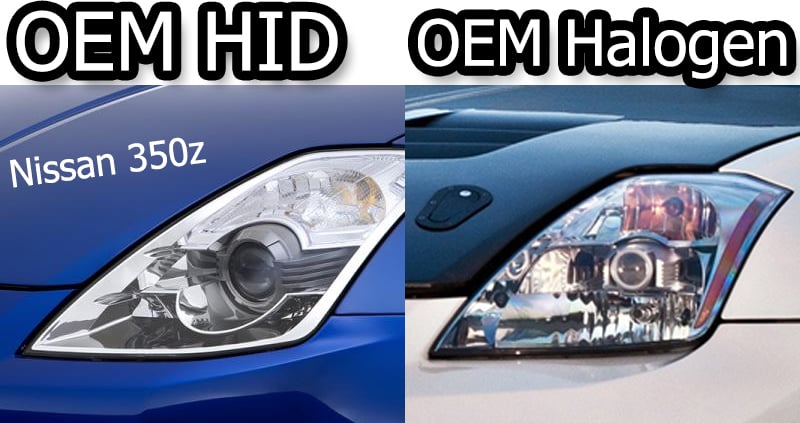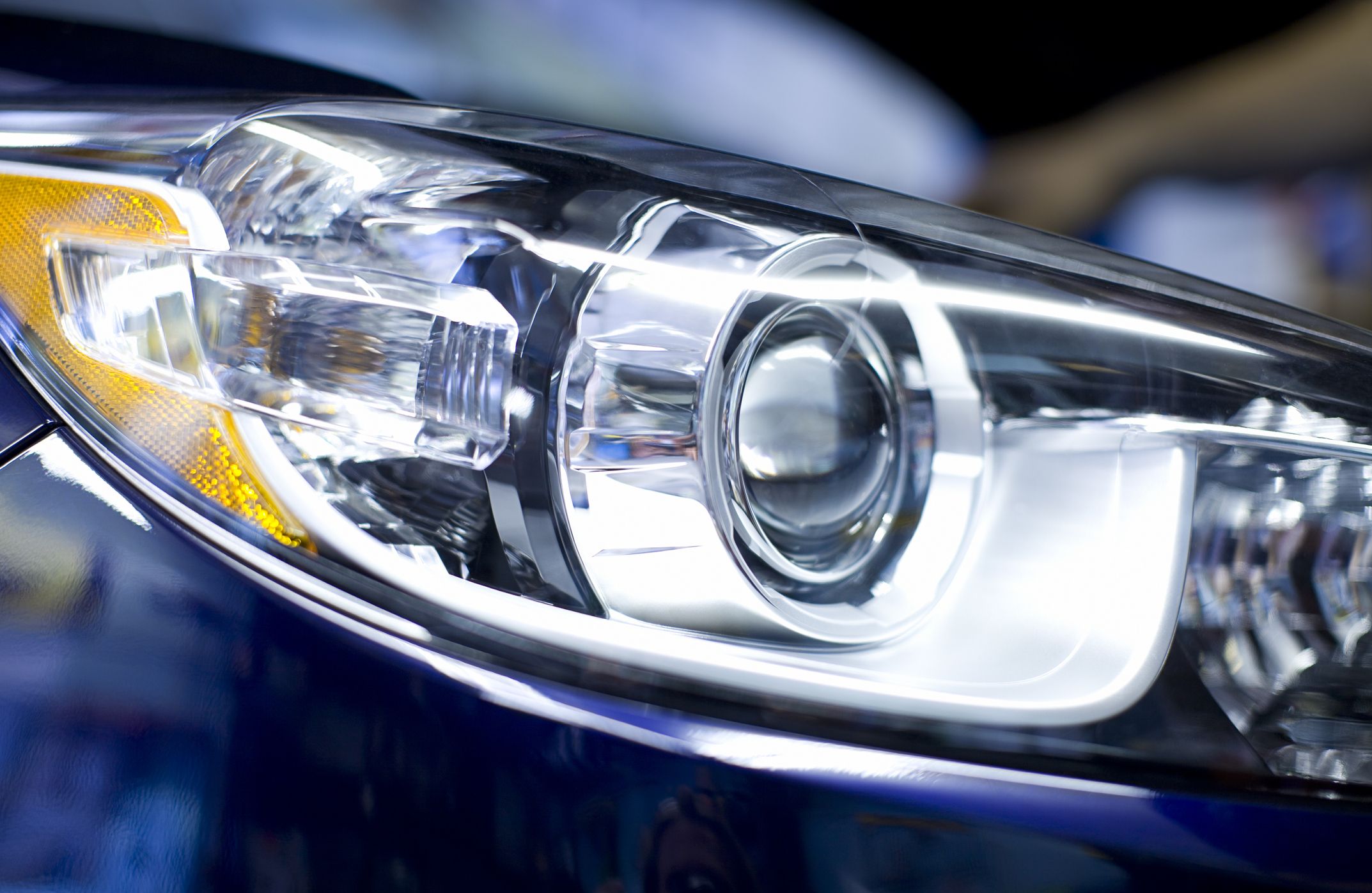High Intensity Discharge (HID) headlights produce light through an electrical charge. The electricity ignites a gas and metallic salts mixture, generating a high-intensity light. HID lights are widely used in automotive lighting due to their brightness and efficiency. They play a crucial role in ensuring visibility on the road, especially in low-light conditions. Unlike traditional halogen bulbs, HID headlights produce a whiter and brighter light, enhancing the overall driving experience. Additionally, HID bulbs are known for their longevity, making them a popular choice among car enthusiasts. With their superior performance and durability, HID headlights continue to be a preferred option for modern vehicles.

Credit: blog.betterautomotivelighting.com
What Does HID Mean in Headlights?
HID in headlights stands for High-Intensity Discharge. HID bulbs produce brighter light than standard headlights, providing better visibility at night and in adverse weather conditions.
HID lighting technology utilizes a tube containing gas and metallic salts, which, when electrified, emits a high-intensity light. This lighting method is known for its energy efficiency and longevity, making it a popular choice for automotive headlights. Additionally, HID headlights are often equipped with reflectors to ensure that the light is directed downwards, minimizing glare for other drivers. When properly installed and aimed, HID headlights can significantly enhance driving safety and visibility.
HID Technology Explained
HID lighting stands for high-intensity discharge. Electricity enters through the ballast, where the starter inside ignites the HID bulb. Once the electricity enters the base of the HID lamp, it flows into a tube containing gas and metallic salts. The gas helps with the initial strike of light and then heats up, vaporizing the metallic salts. This process produces a high-intensity light that is emitted.
HID Systems Components
| Component | Description |
|---|---|
| Ballast | A device that regulates the electrical current and provides the initial ignition for the HID bulb. |
| HID Bulb | The bulb that emits the high-intensity light. |
| Gas and Metallic Salts | The gas and metallic salts inside the HID lamp that produce the light. |
HID headlights are known for their energy efficiency and high lumen output. They are a popular choice for automotive lighting due to their brightness and longevity. However, over time, HID bulbs can lose their brightness and may need to be replaced.
Comparing HID with Other Headlights
Discover what HID means in headlights and how it compares to other types. HID stands for high-intensity discharge, offering greater energy efficiency and brightness than halogen or incandescent lights. HID bulbs can eventually dim over time, signaling the need for replacement.
1. HID vs Halogen
HID lights are brighter and longer-lasting than halogen lights.
2. HID vs LED
LED lights are more energy-efficient, but HID lights are brighter.
3. HID vs Incandescent
HID lights are more efficient and durable compared to incandescent lights.
Advantages of HID Headlights
1. Brightness and Visibility
HID headlights provide enhanced brightness and visibility compared to traditional halogen headlights. The intense light emitted by HID bulbs ensures better illumination of the road ahead, allowing drivers to see obstacles and hazards more clearly. This improved visibility can contribute to safer driving, especially in low-light conditions or during nighttime.
2. Energy Efficiency
HID headlights are more energy-efficient than halogen headlights. They produce more lumens per watt, which means they provide brighter light while consuming less power. This energy efficiency not only reduces the strain on the vehicle’s electrical system but also leads to lower fuel consumption, making HID headlights a more sustainable choice.
3. Longevity
HID headlights have a longer lifespan compared to halogen headlights. They are designed to last for thousands of hours, which means less frequent replacement and maintenance. This longevity makes HID headlights a cost-effective option in the long run.

Credit: blog.betterautomotivelighting.com
Common Misconceptions about HID
HID headlights are often misunderstood, with many people thinking that they are illegal or too bright. In reality, HID stands for high-intensity discharge, which is a type of lighting technology used in headlights to produce a bright, white light. Contrary to popular belief, when properly installed, HID headlights can provide better visibility without blinding other drivers.
1. Legal Concerns
HID lights that point straight ahead can blind other drivers, creating a safety hazard and a legal issue. Properly installed HIDs should be angled towards the road, and many use reflectors to ensure the light shines down and not up.
2. Comparison with Halogen
HID headlights are brighter and provide a better color spectrum compared to halogen headlights. They also have a longer lifespan and consume less power, making them more efficient.
3. Problems with HID Headlights
HID bulbs can lose their brightness over time and eventually fail, causing one headlight to be significantly dimmer than the other. Wiring and connectors can also become damaged due to age, wear, or exposure to the elements.
Identifying HID Headlights
When identifying HID headlights, visual differences may include brightness and color temperature. HID lights usually appear brighter and have a bluish-white hue. Performance indicators of HID headlights include longer lifespan and greater energy efficiency compared to halogen bulbs. Additionally, HID lights often provide better visibility in various driving conditions, enhancing overall safety. It’s important to consider these factors when determining the benefits of HID headlights for your vehicle.
Potential Issues with HID Headlights
HID stands for High-Intensity Discharge, and it refers to a type of headlight that uses an electric arc to produce light. While HID headlights are known for their brightness and longevity, there are potential issues such as decreased brightness over time and damage to wiring and connectors.
Potential Issues with HID Headlights
- HID bulbs can dim over time
- Flickering or uneven brightness may signal failure
- Wiring and connectors can deteriorate with age
Proper maintenance is crucial to prevent these issues and ensure optimal performance and longevity of HID headlights.
Maintenance and Care for HID Systems
HID, or High-Intensity Discharge, is a type of lighting system commonly used in headlights. It works by passing an electric current through a gas-filled tube to produce a bright, intense light. HID systems require regular maintenance and care to ensure optimal performance and longevity.
1. Replacing HID Bulbs
Ensure proper handling to avoid damage during installation.
2. Troubleshooting Common Problems
Check for loose connections or faulty ballasts for flickering lights.
The Future of HID in Automotive Lighting
Discover the future of HID in automotive lighting and explore what HID means in headlights. HID technology provides high-intensity illumination for enhanced visibility on the road, offering a superior lighting solution compared to traditional halogen bulbs. Experience the next level of brightness and efficiency with HID headlights.
The future of HID in automotive lighting looks promising with continuous innovations in technology. LED lighting is gaining popularity, leading to a gradual shift away from traditional HID systems.

Credit: www.caranddriver.com
Frequently Asked Questions
Which Is Better LED or HID Headlights?
LED headlights are better than HID headlights. LED headlights are more energy-efficient, produce brighter light, have a longer lifespan, and provide better visibility on the road. Additionally, LED headlights do not require warm-up time and are more durable.
Why Are HID Lights Illegal?
HID lights can be illegal if they’re not properly installed and angled towards the road. When directed straight ahead, they can blind other drivers, posing a safety risk. To avoid legal issues, it’s essential to ensure that HID lights are installed and aimed correctly.
How Do I Tell If My Headlights Are HID or Halogen?
To tell if your headlights are HID or halogen, look at the color of the light. HID lights produce a bright, white light, while halogen lights produce a yellowish light. You can also check the bulb itself, as HID bulbs are typically larger and have a different shape than halogen bulbs.
Are HID Headlights Better Than Halogen?
HID headlights are better than halogen headlights because they produce brighter and whiter light, improving visibility on the road. HID headlights also last longer and consume less energy compared to halogen headlights.
Is HID Better Than Incandescent?
Yes, HID lights are better than incandescent because they have greater energy efficiency and emit more lumens per watt, providing a lot of light despite their compact size.
What Is the Problem with HID Headlights?
The problem with HID headlights is that over time, they can lose brightness and eventually fail. If one headlight is significantly dimmer or flickers, the bulb may be the issue. Wiring and connectors can also become damaged due to age or exposure to the elements.
What Are HID Headlights?
HID headlights, or high-intensity discharge headlights, are a type of headlight that uses an electrical charge to ignite a gas and produce a bright light. They are known for their bright and crisp white light output.
Conclusion
HID headlights, which stand for high-intensity discharge, are a popular choice for car owners due to their brightness and energy efficiency. They work by using a ballast to ignite the HID bulb, which then produces light through a combination of gas and metallic salts.
While there is a debate between LED and HID headlights, both have their own advantages. It’s important to consider factors such as cost, durability, and personal preference when choosing between the two. Overall, HID headlights offer a powerful lighting solution for enhanced visibility on the road.


Leave a Reply